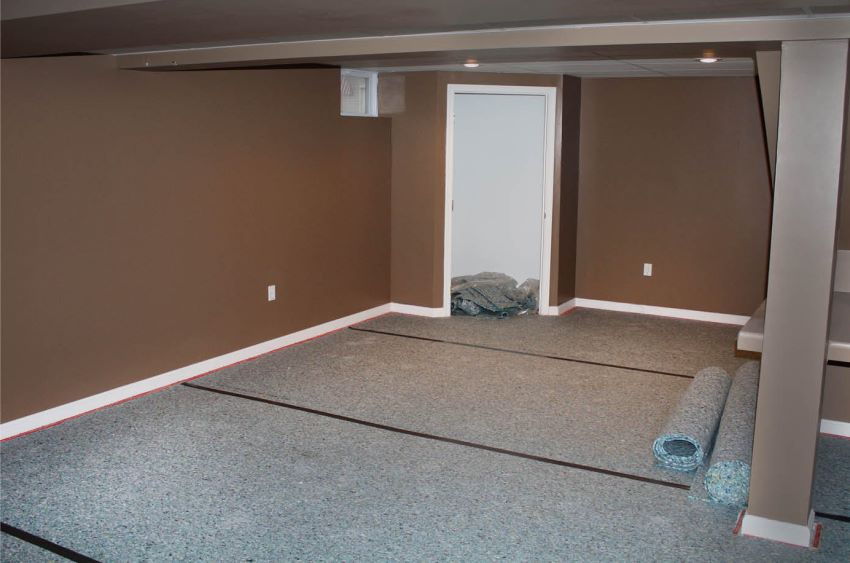One of the most overlooked aspects of buying new carpet involves choosing the right carpet padding. Padding gives you more than just a cushion beneath your carpet, it also adds to the sound and insulating qualities of the floor. A good pad also keeps your carpet cleaner by allowing for increased dirt removal and airflow during vacuuming.
The main purpose of carpet padding is to protect your carpeting. The pad keeps the underside of your carpet from wearing against the bare floor. It also helps the impact of heavy furniture and foot traffic. Carpet pad serves a variety of other helpful purposes:
Unfortunately, most people aren’t really aware that different carpet paddings exist, or that there are a variety of important options to choose from. And those who are aware often make understandable assumptions that just aren’t true. Like assuming that the thicker the padding, the better.
Why use a carpet pad?
Softness
This one is obvious. A layer of good carpet cushion can give your home that softness that makes it feel like your feet sink right into the floor. It creates a softer walk or feel to the carpet. Many homeowners think this is the whole point of the carpet pad, but it’s not. In fact, the best padding for a particular carpet may provide less foot comfort than an inferior one.
Insulation
Carpet padding can make it easier to maintain that perfect temperature in your home by adding an extra layer of insulation.
Sound Insulation
Carpet padding also helps dampen sound. This is especially more important for upstairs rooms, but even in a basement, a pad reduces sound more than just a carpet by itself.
Increased carpet longevity
Carpet padding puts in a great deal of work in protecting your carpet in the long run. A dense carpet cushion supports and protects the backing of your carpet by absorbing most of the impact from foot traffic and furniture.
Protective film barrier
Many carpet cushion products now come with a protective film or barrier that stops liquids or fluids from penetrating into the backing, pad and subfloor. This is especially helpful in situations where spills or pet accidents may be a concern.
Cleaning
A carpet pad makes cleaning your carpet more efficient. When you have padding, your vacuum can raise the carpet slightly and remove more dirt, which helps reduce allergic reactions. It also provides thermal insulation.
Important Hint: Thicker padding is not always better.
These are just some beginning rules of thumb. But as you’ll soon see: there are a lot of details to consider when choosing the right carpet padding.
Thickness
Padding is the support structure for your carpet. It can add softness, give, longevity, and forms the important connection between your carpet and your floor. Paddings come in a variety of thicknesses. For example, those beautiful Berber carpets require low profile padding. The use of more than 3/8-inch padding with Berber carpets, commercial carpets, or some LCL carpets (loop and cut loop designs) is not recommended. Instead, these carpets require a lower profile to avoid being lifted higher than the tack strips that grip and hold the carpet during the stretching process.
And alternatively: softer-backed carpets can have thicker pads. Anywhere from 7/16 to ½ inch is recommended by manufacturers.
Density
Pad density plays a greater role than thickness in lengthening your carpet’s life. Beacuse of that density is another consideration when choosing carpet padding. Density adds longevity to a carpet, in addition to the “soft and bouncy” vs “hard” feeling that most people think of when they consider carpet padding.
Density is generally measured in pounds-per-cubic-foot. The higher the density, the harder the carpet will feel under your feet. Common padding is usually between 3 to 10 pounds. Many experts recommend between 6–8 pounds to achieve the longest lasting carpet. And anything above 6 pounds is also a good option to ensure activation of the warranty requirements from most carpet brands. It should be noted that denser pads are not as soft as lighter pads. Pads with less density result in more wear and tear on the carpet’s surface, while denser pads offer more cushioning for the feet.
Vapor/Moisture Barriers
Vapor barriers are exactly what they sound like: protection against fluids. Whether those fluids come from above (spills on your carpet) or below (water seeping up from some concrete slabs, for example), moisture barriers are there to help prevent liquids from penetrating and soaking into your carpet padding.
Topical barriers are a great choice to help prevent most spills from penetrating the carpet, moving into the padding, and then entering the sub floor below. And with certain spills, like pet urine accidents, these barriers can minimize moisture intrusion. No one wants to deal with lingering pet smells after cleanup.
But if you do choose moisture barriers for your padding, it is crucial that you have your carpet and padding professionally installed to guarantee that all the edges are sealed between each segment of padding. Never use staples on pads with topical sealants. These pads must be professionally glued and/or sealed with waterproof tape.
Whichever barrier you choose, if you choose one at all, it’s always best to get a professional opinion before you buy. Experts can advise you on the best types of thickness, density, and whether or not to add a moisture barrier depending on the room and the estimated traffic involved.
 Carpet Guides All About Carpet Installing
Carpet Guides All About Carpet Installing 

